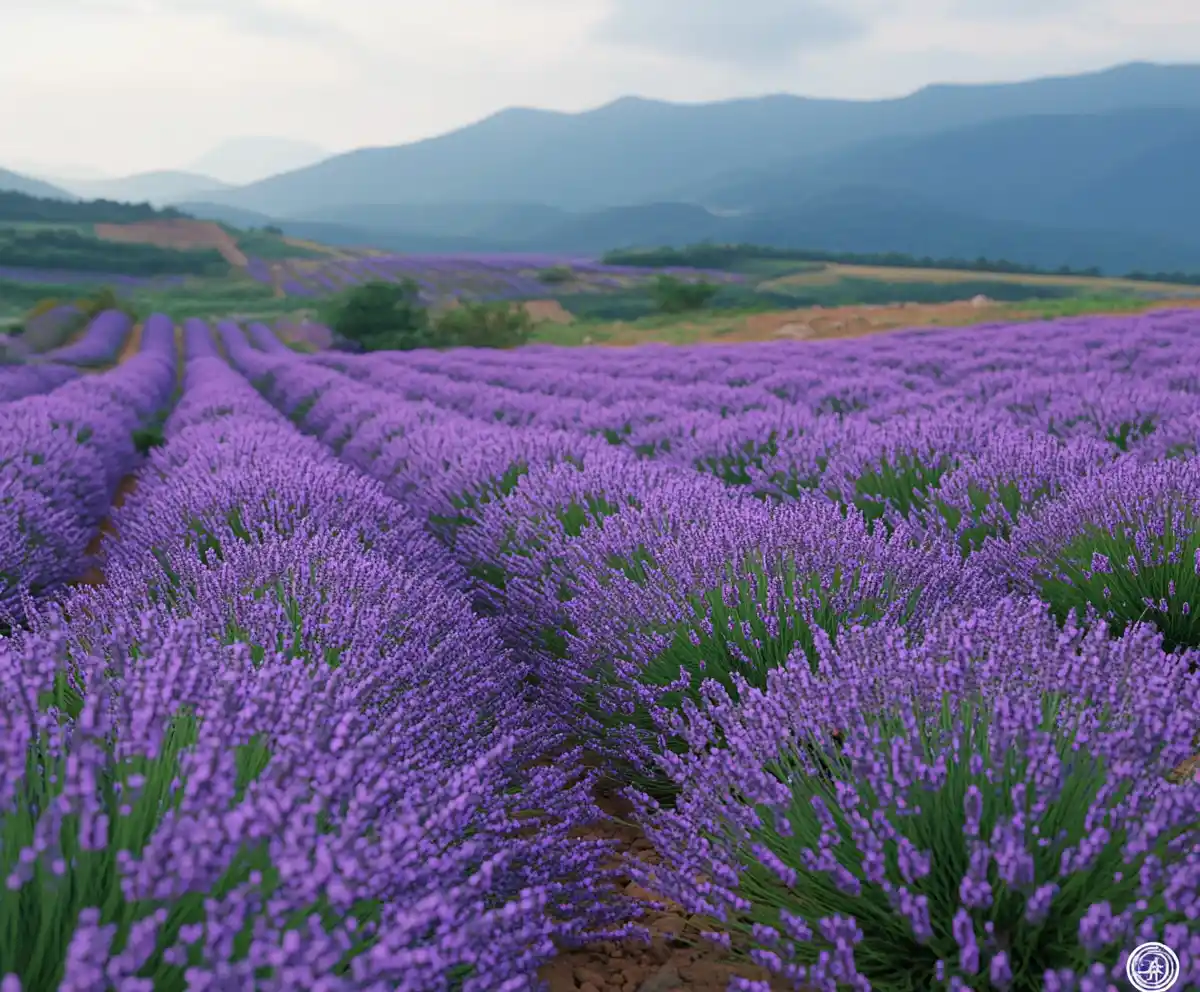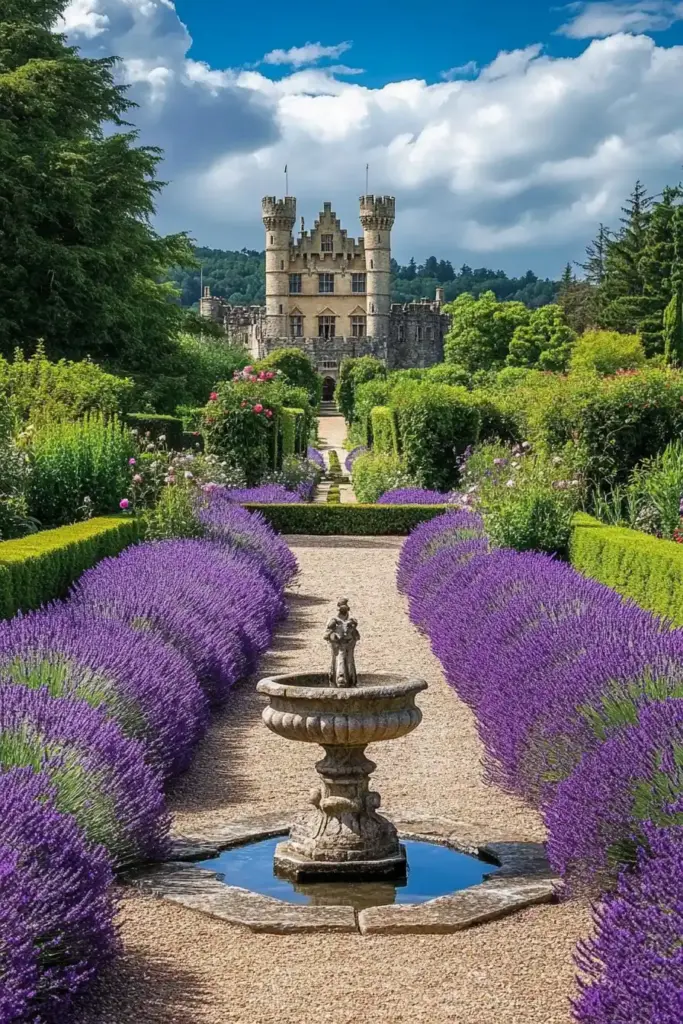Lavender’s timeless beauty, soothing fragrance, and hardy nature make it a top choice for gardeners looking to create a stunning, easy-care hedge. Whether you want to line a walkway, define a garden bed, or simply enjoy year-round greenery, planting a lavender hedge is a smart and rewarding project. Growing typically between 1 to 2 feet tall and spreading up to 5 feet wide, a lavender hedge adds not just charm, but practical benefits to your landscape.
12 Reasons to Plant a Lavender Hedge
Planting a lavender hedge isn’t just about adding beauty to your garden — it brings a host of functional benefits, too. Here’s why you should definitely consider planting one:
Unique Shape
Lavender’s compact, rounded growth habit creates a tidy, sculptural effect that enhances any garden design naturally.
Exceptional Fragrance
Few plants can match the sweet, calming aroma of lavender. A hedge of it ensures that every stroll through your garden feels like a sensory escape.
Outstanding Color Variations
From deep purple to soft lilac and even pinkish hues, lavender offers a stunning palette that evolves throughout the seasons.
Deer Tolerant
If local wildlife tends to nibble on your plants, good news — deer usually avoid lavender due to its strong scent and taste.
Attracts Bees and Pollinators
Lavender is a magnet for bees, butterflies, and other beneficial insects, helping you support a healthier, more vibrant garden ecosystem.
Low Maintenance Once Established
After settling in, lavender requires minimal care — just the occasional prune and water during extended dry spells.
Grows Well Near the Sea
Thanks to its salt tolerance, lavender thrives in coastal gardens where other plants might struggle.
Tolerates Rocky Soil
Forget about perfect soil — lavender actually prefers well-draining, somewhat rocky conditions, making it a resilient choice for challenging spots.
Withstands Moderate Drought
Once established, lavender is wonderfully drought-tolerant, helping you conserve water without sacrificing beauty.
Prevents Soil Erosion
Lavender’s dense root system helps stabilize soil on slopes or garden edges, reducing erosion naturally.
Great for Dried Flower Crafts
Lavender holds its fragrance and color even after drying, making it perfect for wreaths, sachets, and other DIY crafts.
Edible and Acts as a Windbreak
Some lavender varieties are culinary-friendly, adding a unique twist to recipes, while a dense lavender hedge can also help shield your garden from wind.
Best Lavender Varieties for a Hedge
Choosing the right lavender variety is key to building a beautiful, long-lasting hedge. While there are many options available, a few stand out for their growth habits, resilience, and visual appeal.
Lavandula angustifolia (English Lavender)
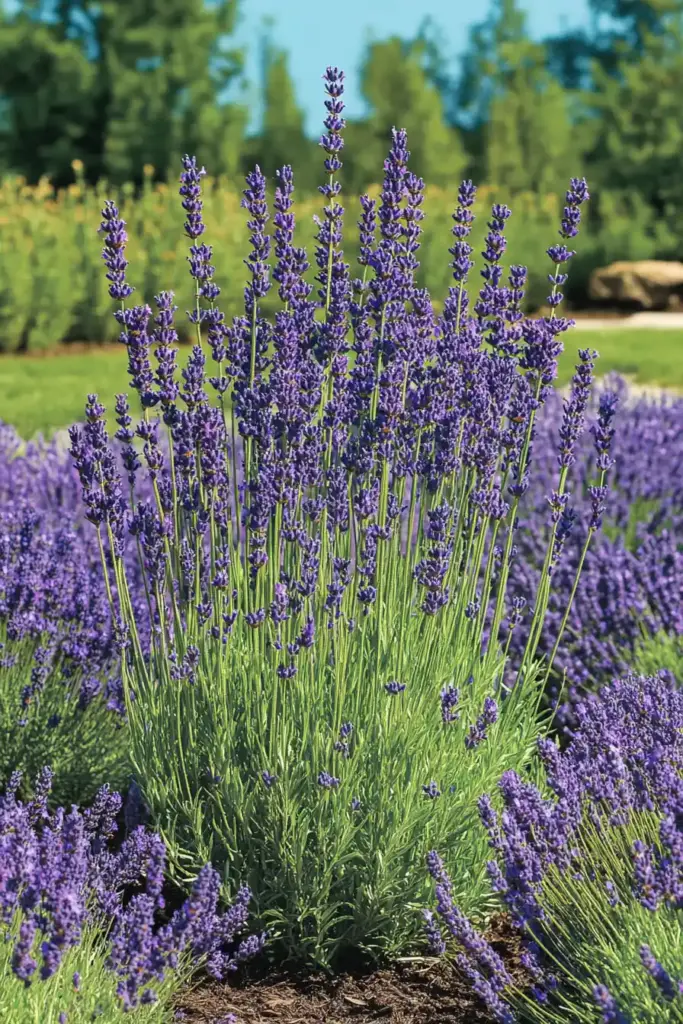
Often referred to as “common lavender,” Lavandula angustifolia is a classic choice for hedging. It grows in a compact, tidy shape with soft gray-green foliage and dense flower spikes. Blooming from late spring through midsummer, this variety is beloved for its high-quality essential oils and its ability to thrive in a variety of garden settings, including borders, rock gardens, and formal designs.
Lavandula x intermedia (Lavandin)
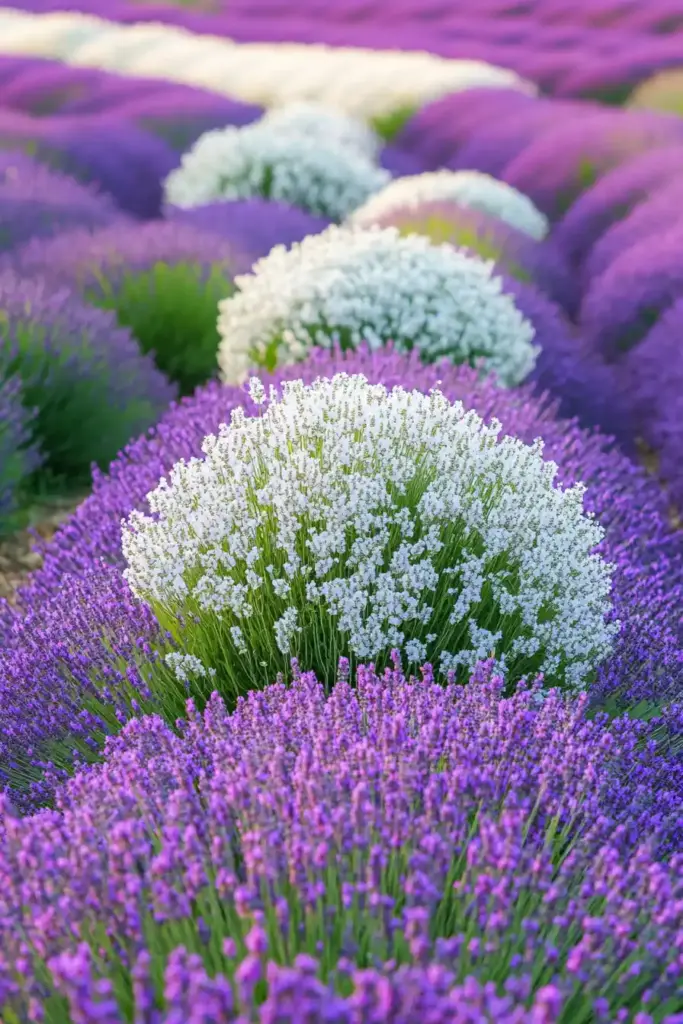
If you’re looking for a slightly larger hedge, Lavandula x intermedia, commonly called lavandin, is a great option. It forms tall, lush mounds with long flower spikes that are incredibly fragrant. Flowering from mid to late summer, lavandin is perfect for creating a dramatic hedge, though it’s a little less cold-hardy compared to English lavender. Its flowers are often used in potpourris and dried arrangements.
Lavandula stoechas (Spanish/French Lavender)
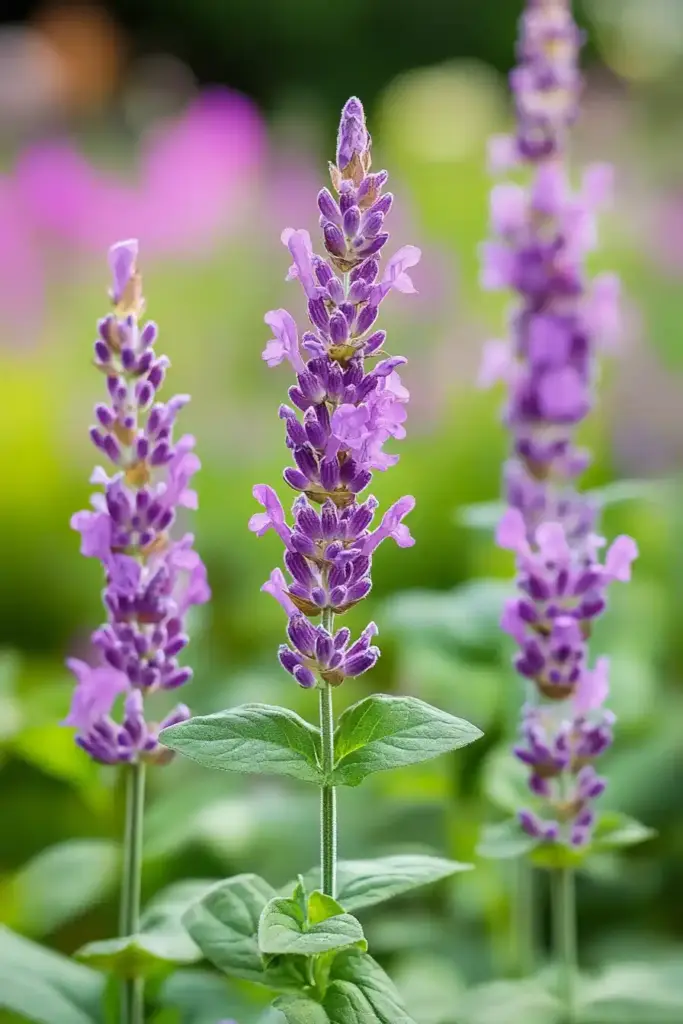
Known as Spanish, French, or Butterfly Lavender, Lavandula stoechas brings a touch of the exotic to your garden. It’s particularly heat-tolerant, thriving in USDA zones 8 to 9, and blooms almost continuously from spring through late summer. Its striking “rabbit ear” blooms make it a standout choice for both hedges and container gardens, adding a burst of color and texture.
Steps to Grow a Lavender Hedge
Creating a thriving lavender hedge starts with good preparation and care. Follow these steps to ensure your hedge grows healthy, lush, and long-lasting.
Pick the Location
Lavender loves the sun — it’s essential to choose a site that receives at least six hours of full sunlight daily. Ideal growing conditions are found in USDA Zones 5–9, where lavender thrives with plenty of warmth and light. A sunny spot not only boosts blooming but also helps prevent disease by keeping foliage dry.
Soil pH Considerations
Lavender prefers slightly alkaline to neutral soil, ideally with a pH between 6.4 and 8.3.
- Test your soil before planting to know where you stand.
- If your soil is too acidic, amend it with dolomite lime or ground limestone to raise the pH.
Proper soil preparation ensures your lavender gets off to the best possible start.
Prepare the Site
- Loosen the soil to a depth of 6–8 inches using a garden fork or rototiller.
- Form a raised ridge about 6 inches high by mixing topsoil and compost. This promotes excellent drainage, which lavender needs to prevent root rot.
Tip: Lavender hates “wet feet,” so well-drained soil is non-negotiable!
Planting Lavender
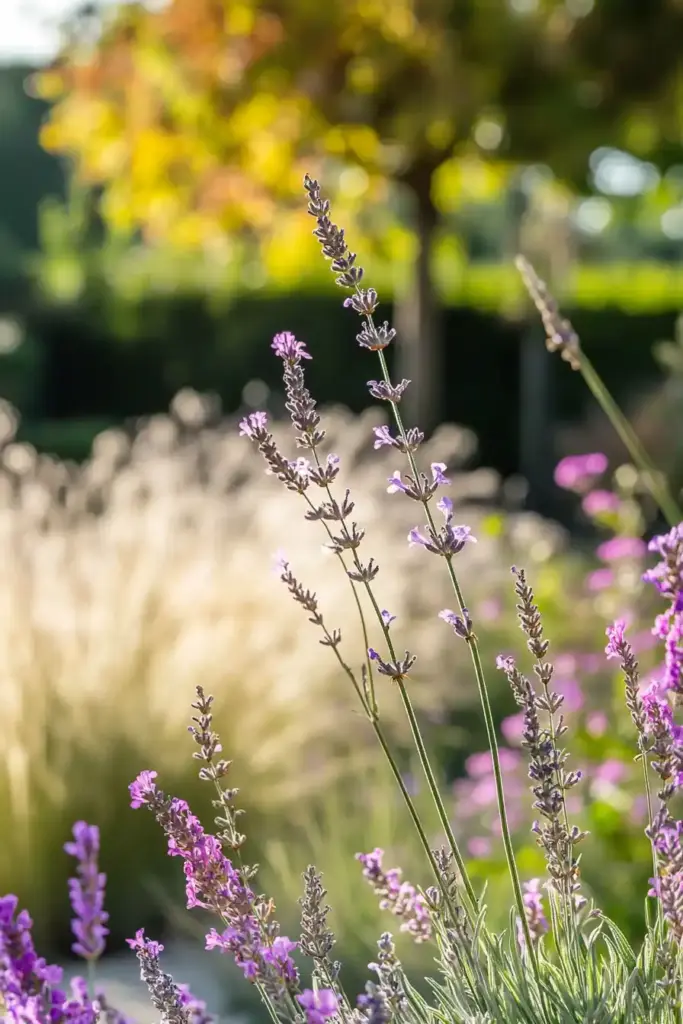
- Gently loosen the root balls of your lavender plants before placing them in the soil. This encourages roots to spread into their new home.
- Space the plants about 10–12 inches apart, placing them in the center of your raised bed or ridge.
- Water thoroughly after planting and keep the soil moist (but not soggy) during the first growing season. Once established, lavender becomes wonderfully drought-tolerant.
Staggering Rows for a Denser Hedge
Want a thicker, fuller hedge?
- Create a wider ridge (around 25 inches wide).
- Plant two staggered rows of lavender, spacing plants 12 inches apart in each row.
The staggered design makes the hedge look more natural, lush, and robust — perfect for a dramatic garden statement.
Pruning Lavender
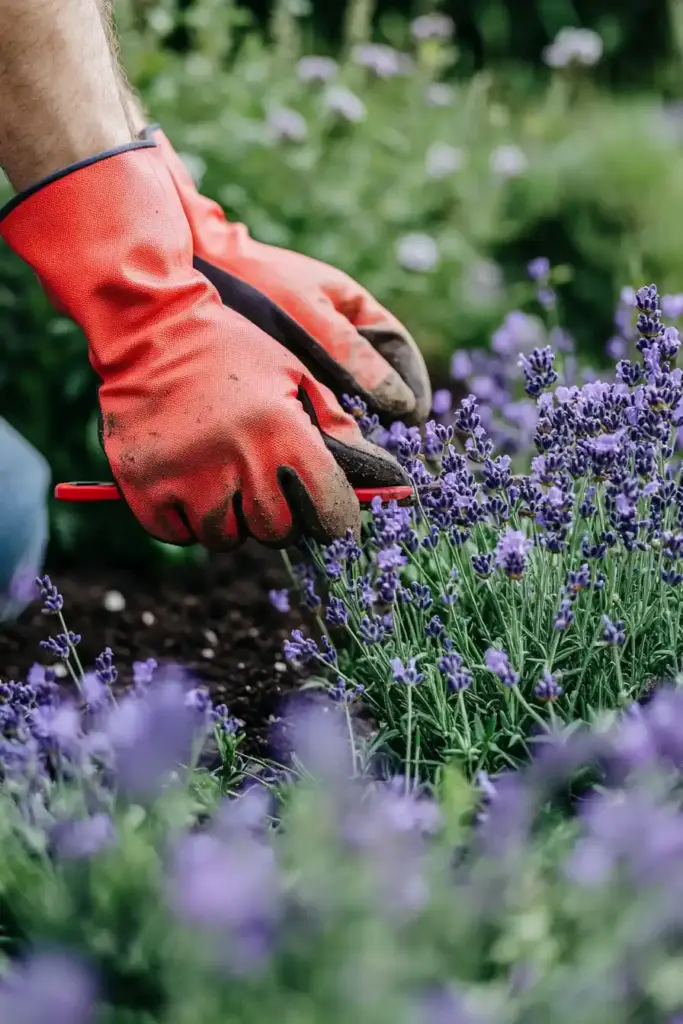
Pruning is vital for a tidy, bushy hedge:
- In early spring, cut back about one-third of each plant.
- This encourages fresh growth and abundant flowering, while preventing the hedge from becoming woody and sparse over time.
Ensure Good Airflow
Lavender needs space to breathe:
- Maintain proper spacing to avoid mold and mildew.
- Good airflow between plants also minimizes competition for nutrients and water, leading to healthier growth overall.
Frequently Asked Questions About Planting a Lavender Hedge
How long does it take to grow a lavender hedge?
Typically, it takes about one to three years for a lavender hedge to reach its mature size and full, bushy appearance. Growth rates can vary depending on the lavender variety, soil quality, and climate. Proper pruning and good sun exposure will help your hedge fill out faster.
What is the best time of year to plant a lavender hedge?
The best time to plant a lavender hedge is in the spring or early fall. Planting in spring gives lavender plenty of time to establish before winter, while early fall planting works well in warmer climates where frost arrives late.
How far apart should I plant lavender for a hedge?
For a neat, structured hedge, space lavender plants 10 to 12 inches apart. If you’re aiming for a denser, fuller look, you can stagger two rows about 12 inches apart for a more natural effect.
Can I plant a lavender hedge in clay soil?
Lavender struggles in heavy, poorly-draining clay soil. To successfully plant a lavender hedge in such conditions, amend the soil heavily with sand, gravel, or compost to improve drainage, or consider building raised beds or mounds.
How often should I water a newly planted lavender hedge?
During the first growing season, water lavender regularly to keep the soil lightly moist but never soggy. After the hedge is established (usually after the first year), watering can be reduced significantly, especially if rainfall is sufficient.
Does a lavender hedge need a lot of maintenance?
Not at all! Once established, a lavender hedge is low maintenance. The main tasks are annual spring pruning, occasional weeding, and supplemental watering during long dry spells.
Conclusion
Planting a lavender hedge is one of the most rewarding ways to enhance your garden’s beauty, fragrance, and functionality. With its drought tolerance, low maintenance needs, and ability to attract pollinators, lavender proves to be more than just a pretty plant — it’s a hardworking addition to any landscape. By choosing the right variety, preparing the site properly, and giving your plants the sun and airflow they crave, you’ll soon enjoy a stunning hedge that delights the senses and supports a thriving garden ecosystem.
Whether you’re dreaming of a fragrant walkway, a pollinator paradise, or simply a vibrant pop of color that asks little in return, it’s hard to go wrong when you plant a lavender hedge.

